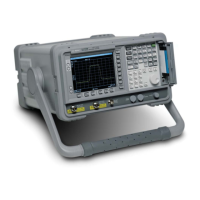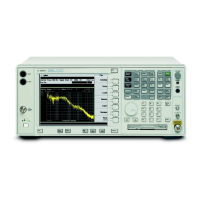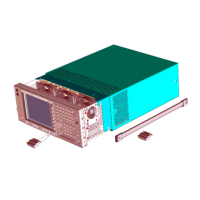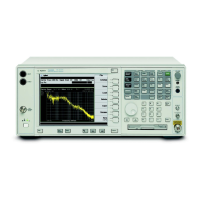82 Chapter 2
Front-Panel Key Reference
Det/Demod
Det/Demod
Accesses the menu keys controlling detector functions, demodulation
functions, if an FM Demod Option is installed (Option BAA or Option
106), and the speaker.
NOTE The FM Demod internal circuitry must be aligned before use. Press
System, Alignments, Align Now, FM Demod.
Detector Auto Man Selects a specific detector, or uses the system to pick the appropriate
detector (through
Auto) for a particular measurement.
When discussing detectors, it is important to understand the concept of
a trace “bucket.” For every trace point displayed, there is a finite time
during which the data for that point is collected. The analyzer has the
ability to look at all of the data collected during that time and present a
single point of trace data based on the detector mode. We call the
interval during which the data for that trace point is being collected,
the “bucket.” Thus a trace is more than a series of single points. It is
actually a series of trace “buckets.” The data may be sampled many
times within each bucket.
When the detector choice is
Auto, selecting trace averaging (BW/Avg,
Average (On)) changes the detector. The Auto choice depends on marker
functions, trace functions, and the trace averaging function. If a marker
function or measurement is running, the
Auto choice of detector is
either
Average or Sample. When one of the detectors (such as Average) is
manually selected instead of
Auto, that detector is used without regard
to other analyzer settings.
The
Average detector displays the average of the signal within the
bucket. The averaging method depends upon
Avg Type selection (Video
or RMS).
The
Sample detector displays the instantaneous level of the signal at
the center of the bucket represented by each display point.
The
Peak detector displays the maximum of the signal within the
bucket.
The
Negative Peak detector displays the minimum of the signal within
the bucket.
Neither average nor sample detectors measure amplitudes of CW
signals as accurately as peak, because they may not find a spectral
component’s true peak, but they do measure noise without the biases of
peak detection.
The detector in use is indicated on the left side of the display. A # will
appear next to it if the detector has been manually selected.

